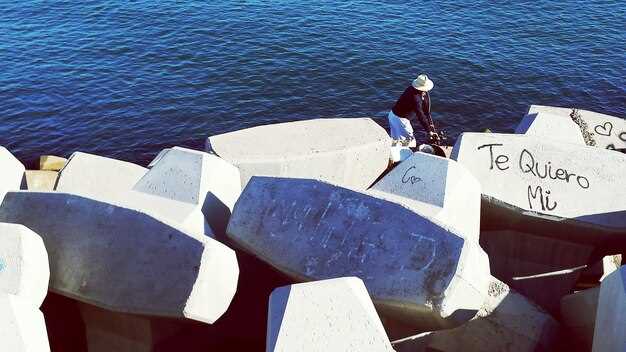Book a yacht and begin in Skiathos. "(《世界人权宣言》) high sun and huge coves make the first day spectacular. If you booked a route that loops from Skiathos to Skopelos and Alonnisos, you’ll land at an isle beach before lunch and still have time for a sunset in a delightful cove.
For expert captains and newlyweds, the Sporades offer delightful contrasts: calm mornings, gusty afternoons, and beaches with white sand. The park of anchorages around Skiathos, Skopelos, and Alonnisos gives you fast options to adjust plans, with a 帆船 handling that stays spectacular.
Pack light bags and keep a breeze-ready kit; the spectacular seas can shift in minutes. If seasickness worries you, take a pill before departure and keep a few salty crackers handy; the isle stops stay delightful and close to shore for easy breaks. This route must be on your radar if you want high comfort and real Greek charm.
Believe in a relaxed pace: morning swims, noon islands, and sunset sails that end with a charming tavern dinner along clear water. For newlyweds, arrange a private cove and a sunset deck moment; Skiathos Town gives a delightful glow and spectacular photos.
From the breeze of skiathos to the spectacular cliffs of Skopelos, the Sporades reward a plan that keeps pace with comfort. only a plan that matches what you wanted and what the weather allows will deliver true ease on deck. If you believe in slow cruising and delightful discoveries, this route becomes a yacht charter that you and your crew will love.
Practical sailing blueprint for Alonnisos Steni Vala and the Sporades
Begin with a two-leg loop: Steni Vala to sheltered coves along Alonnisos’ south coast for a delightful lunch and a swim, then anchor for the night in a calm bay before returning toward Patitiri, the city, for provisioning and a touch of cultural beauty.
Plan short hops of 6–12 nautical miles, usually 2–4 hours at 5–6 knots under steady sea breeze. In summer, expect 10–20 knots from the north to northeast; spring and autumn bring lighter air and reliable afternoon seabreezes around 12–18 knots. Times shift with fronts, so aim to finish hops by late afternoon for comfortable anchorages and night viewing opportunities.
Extend to Skopelos with a daytime passage of 12–22 nautical miles, typically 3–5 hours depending on wind; you’ll find excellent tavern options and bays for swimming along the way. If you include a longer arc that touches folegandros, map your legs to keep daylight hours for sailing and reserve single overnights in protected harbors, making the cruise smooth and enjoyable.
Navigation basics: carry up-to-date Sporades charts, a reliable GPS backup, and a compact set of quadrants for celestial sights or cross-checks at night. Use a quick bearing check from 2–3 fixed points to keep your track clear and build trust in the plot.
Anchor strategies: pick coves with sandy or muddy bottoms, good holding, and protection from wind shifts. The archipelago becomes a delightful playground for swims, shore hikes, and wrecks to explore by snorkel. Consider a swing keel if available or use a stern anchor near wreck sites for divers, keeping safety first. Night arrivals should align with hour-by-hour wind changes; always wear life jackets when on deck after dark.
Provisioning and service: in Steni Vala and Patitiri you find delightful tavernas and a few taverna options with excellent service. Buy fresh fish, olives, and bread daily, and pick a taverna with a view to enjoy sunset after the sail. The living culture of the islands comes alive in the city at night.
Be mindful of environmental limits within the worlds of history and nature and the World Biosphere Reserve around Alonissos and the surrounding seas. Respect cultural heritage sites, including anavatos on a separate inland trip if you have a land day; viewing the ruins provides a stark perspective on earth and history, then return to the boat with a renewed sense of being and balance.
Clouds and times: always check VHF for weather warnings; keep a single engine backup plan; maintain a steady schedule to avoid crowded anchorages and to maximize experiences with taverns and quiet nights. It seems the islands reward patient sailors with calmer seas and richer stops, and the plan keeps you connected to local life while you keep your crew safe.
Best timing for Sporades passages from Alonnisos

Depart Alonnisos at 07:00–08:00 for Skopelos: a 20–25 NM crossing that typically takes 3–4 hours at 6–7 knots. Calm seas yield a complete morning and an exquisite, spectacular view of the white coast. This route carries a century of seafaring tradition; bring a couple of drinks, set the plan onto the next leg, and sail knowing you’ve chosen a light start for the day.
In late spring and early autumn, use dawn departures to Skopelos or directly toward Skyros to avoid the strongest NW breezes. Knowing the forecast lets you dodge the heaviest gusts; if winds rise above 15–20 knots, shorten the leg or pause at Steni Vala for shelter. This cultivated discipline preserves energy, and you can sample a few anchorages along the coast for enriching swimming, lunch, or a quick walk ashore with a view that never fails to inspire the crew.
From Skopelos to Skyros, plan 22–28 NM with 4–5 hours at 5–7 knots; depart 06:30–08:00 to catch a calmer morning and a steadier ride. The deeper open water along this stretch reveals cliff faces and coves that make the crossing feel spectacular. You may opt to visit Steni again for a brief drive ashore, then continue to Skyros if the crew is tired, or push directly to a favorite beach for a longer stay.
Practical notes: carry enough cash for harbors, fuel, and taverns; keep a sample of charts and a tide table, plus a small stash for drinks and snacks. The coast offers beaches and sheltered bays ideal for swimming and rest; plan weeks of flexible routing to enrich the course and provide many chances to sample local cultivation, tastes, and treats. Over the weeks, this cultivation of a relaxed rhythm keeps the crew energized. A donkey may wander the quay at some stops, a humorous reminder of island life, while the crew stores memories and a few vignettes to enrich them. This approach ensures you finish each leg with a sense of completion and a wider view, and a well-earned taster of the Sporades life.
Harbor, mooring, and anchorage options at Steni Vala

Instead of one rigid plan, start with the right-side quay as your first option when space allows. Tie alongside or stern-to with a spring line, and let the crew handle the lines. The quay area is spacious and well-situated for provisioning, with water available and a modest power supply. The stretch of quay is renowned for easy access and clear water, and the cliffs along the headland create a sheltered pocket that suits a yacht and crew during calm hours. After your bow-to approach, you can step ashore for a quick meal or a bottle of ouzo at the nearby tavern.
If quay space is tight, anchor off the left side in four to seven meters of water during calm hours, with the anchor set in a sand/shell bottom. Use generous scope, and never rely on a single line in changing wind. This anchorage is nearly always protected from easterlies, and after a short stay you may enjoy mandarins and fennel aromas from the nearby tavernas. Humidity climbs in the afternoon, but the water remains clear, making it easy to spot the anchor and keep a steady swing with the wind.
For longer visits, the inner wall offers a right-side mooring option that pairs well with a stable line to a bollard. A yacht here can sit in a spacious corner, with facilities nearby and the opportunity to cross to shore by tender. Unlike crowded ports, this spot lets you keep a low profile while the four o’clock breeze aids calm handling. The area is renowned for its relaxed vibe and the chance to enjoy ouzo and a spoon of fennel oil with a seaside snack. If your crossing into Steni Vala comes from the main Sporades routes, check harbor hours and keep your crew ready to assist, especially during peak times.
| Option | Mooring/Anchorage | Depth (m) | Protection | Facilities | 说明 |
|---|---|---|---|---|---|
| Quay mooring | Right-side quay | 2-4 | Good in W/NW; sheltered in many directions | Water, limited power, tender access | Spaces can be tight; approach slowly |
| Stern-to along inner wall | Inner wall face | 3-6 | Very reliable in light to moderate winds | Lines, bollards, sometimes fresh water | Best with crew assistance; watch for passing traffic |
| Offshore left-side anchor | Off the left side | 4-8 | Protected in calm hours; more exposed with strong NW | Bottom: sand/shell; swing room | Use ample scope; never swing toward shore |
| Buoy moorings | Outer bay buoy system | 3-5 | Moderate protection when winds shift | Buoy lines, quick access | Check with harbor master; conditions change rapidly |
Mamma Mia in Greek: key phrases for docking, provisioning, and dining
Reserve a calm mooring at the largest harbor and confirm with the harbor master; bring a steno pad to record instructions and times.
Docking phrases:
- Could you guide us to the mooring, please?
- Is there space on the quay for our sailboat?
- We need mooring with water and 220V electricity, if possible.
- What is the charge for this mooring?
- Is the pier open for docking now?
- Who should we contact on VHF for harbor instructions?
- We aim for a symbol of good service; please assist.
- We plan exploring the area after docking.
- We bring a steno pad to record instructions.
- If space is full, please suggest the nearest alternative quay.
- Please advise about local restrictions.
Provisioning phrases:
- Where is the best market for local agricultural produce?
- We want fresh fruit, vegetables, dairy, olive oil, and bread.
- Do you accept cash or cards?
- Can you arrange delivery to the boat?
- What are market hours?
- We prefer items from nearby farmers.
- Any recommendations for quality olive oil and honey?
Dining phrases:
- Table for two on the terrace with a view of mosaics, please.
- Seafood and Greek salads, no gluten.
- Vegetarian options available?
- Which wine pairs with the catch of the day?
- We wear light clothing; is shade available?
Exploring the Sporades rewards excellent interactions with locals and staff, and the service you receive becomes a symbol of Greek hospitality. The harbor mosaics reflect a deep tradition, and the agricultural markets nearby add fresh flavors to meals on board, turning this part of the voyage into a memorable experience for anyone sailing these waters.
Local rules, fees, and port etiquette for mooring in the Sporades
Moor only at designated buoys or marina berths; avoid unmarked anchoring to keep space for other vessels and to follow local rules–this is the quickest way to a trouble‑free stay in the Sporades. The essence of good practice is simple: respect the channels, obey posted notices, and plan ahead with the harbour master’s office as yourИсточник of truth.
- Mooring fees – Buoy moorings typically range from 20 to 40 EUR per night for boats up to 12 m, with larger craft paying more. Marina berths are usually 40 to 120 EUR per night, depending on season and exact location. Electricity can add 6–12 EUR per night; water is often included but occasionally billed separately.
- Payment and permits – Carry cash in EUR and a card as backup; some ports accept card payments at the quay office or via marina terminals. In busy periods, secure a berth before arrival and ask the staff about any local cruising permits or cruising tax requirements.
- Approach and space – Look for marked entry lanes and approach slowly to minimize wake. Give close space to other boats maneuvering in tight sails and keep a clear path for ferries and fishing vessels. In bays with nesting sites, keep engines off when at anchor to protect their habitat.
To unearth practical tips, speak with skippers who have sailed these waters for a lifetime. Worldwide practice favors courtesy: avoid circling in busy mooring fields, and always retract fenders when leaving a spot to prevent eye-wateringly loud clashes with other boats during busy hours. If you haven’t planned ahead, you’ll miss the best spots near Alonnisos or Skantzoura, where the water is as clear as wine and the coastlines are as friendly as their locals.
Port etiquette by style of arrival – In the bigger harbors, be patient: the huge influx of visitors can tighten space, especially near Patitiri on Alonnisos or the main quay at Skiathos. A quiet, courteous approach wins over staff and fellow visitors alike; refrain from loud music after dark and avoid blocking access lanes for fishing boats, ferries, or emergency craft.
- Beaches and isles – If you plan to visit small isles like Skantzoura or nearby coves, call ahead or check the posted schedule; reserve a spot on popular days to avoid disappointment. When anchored offshore, maintain a deep watch for changing wind and current to prevent a sudden close approach with shorelines or moored boats.
- Waste and facilities – Use designated waste and pump-out facilities; never discard garbage at sea. Carry enough water and fuel ashore via official docks, and return with empty tanks and full trash bags; this keeps the beaches pristine for the next visitor and the local economy intact.
- Provisions and social cues – In busy harbors, friendly dock staff can point you to nearby supermarkets and tavernas. Expect a contrast between the calm, nestling coves and the busy quays during beach wedding seasons or local festivals; plan around these to avoid crowds and noise near moorings.
Island notes: Alonnisos, with its protected coast and serene coves, rewards careful planning and patient handling of lines. Skantzoura’s tiny isles require shorter stays and precise manouevers; Skiathos and Skopelos have dense traffic in peak months, so book early and prepare to maneuver deeper into sheltered bays. In all cases, keep a lookout for posted restrictions around protected nesting areas and avoid anchoring within marked bans.
Practical cue: always check the latest notices on site–источник official port boards, then confirm with the harbour master. If you haven’t done this, you’ll lose chances to anchor in prime spots around the islands’ nesting beaches. Remember, a well‑tuned approach makes your visit a memory of a lifetime, not a headache–whether you’re a visitor or returning to your favorite isle after decades.
Finally, nurture a friendly rhythm with local crews: greet with a smile, offer a wave when you pass, and share a quick hello at the quay. Your eye and your eye‑wateringly gorgeous surroundings deserve the best care, and responsible mooring is the best part of any Sporades experience–a true contrast to crowded, careless harbours and a reminder that the Sporades’ essence lies in respectful sailing, good wine or beer, and generous hospitality.
Hidden coves near Alonnisos reachable by a small yacht
Anchor in a protected cove along Alonnisos’ east coast, just a short dinghy hop from Patitiri, and let guests step ashore for a warm welcome. The shore offers a tiny tavern, a hillside church, and olive groves that reflect the island’s agricultural heritage. A lack of crowds keeps the site peaceful, and neighbor homes add a sense of genuine Greek life, boosting comfort for a longer, more relaxed stay.
From there, take a light sail to two hidden coves that stay calm even when the wind shifts. One offers a crescent beach with clear, shallow water–perfect for taking a dip and a little snorkel. The other curves around a rocky promontory to form a caldera-like pool of warmer water–really inviting for a quick soak. Both coves are rarely visited by larger boats, so you can avoid crowds and enjoy the quiet best moments on your trip.
Back at anchor, you’ll feel the neighborly rhythm of greece. Fishermen sometimes share fresh herbs, guests gather on deck for a treat, and the nearby church bells mark time-honored heritage. If you have time, also visit Mesta on Skopelos to see the much-loved stone houses and a hillside church. A short tender hop lets you sample taverns that serve rustic meals and local wine with easygoing charm.
Practical notes: plan 4–8 nautical miles from Patitiri; at 5–7 knots, that’s roughly 0.6–1.5 hours. Depths in these coves usually run 2–8 m, so drop anchors with a scope of about 4:1 in calm winds and consider a stern line if rocks loom close. Check the morning wind forecast, as warm coastal air can shift quickly, and bring water, shade, and sun protection. A calm day yields a wonderful balance of water-taking restraint and comfortable on-board life, with guests avoiding the hard work of crowded harbors.

 Insider Tip for Sailing the Sporades in Greece – Mamma Mia in Greek">
Insider Tip for Sailing the Sporades in Greece – Mamma Mia in Greek">